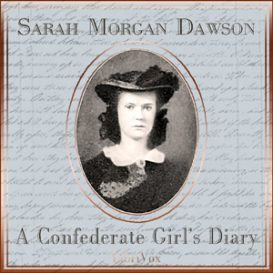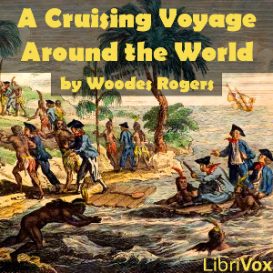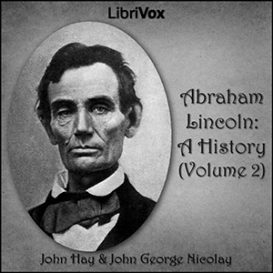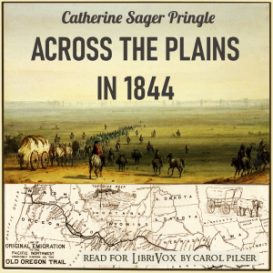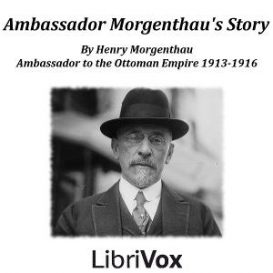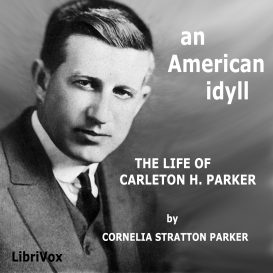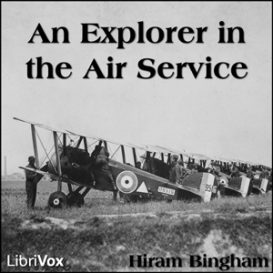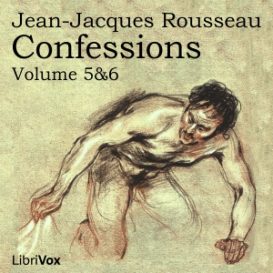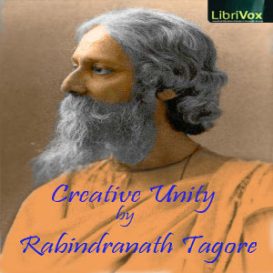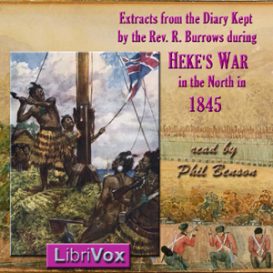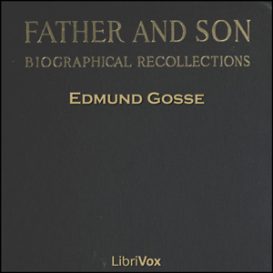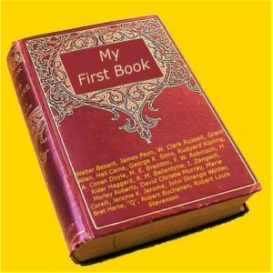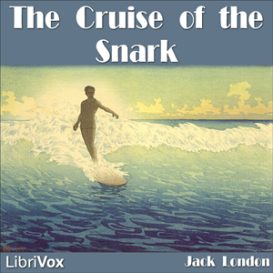Memoirs
Showing all 25 results
‘Co. Aytch,’ Maury Grays, First Tennessee Regiment or, A Side Show of the Big Show
Samuel ?Sam? Rush Watkins (June 26, 1839 ? July 20, 1901) was a noted Confederate soldier during the American Civil War. He is known today for his memoir Company Aytch: Or, a Side Show of the Big Show, often heralded as one of the best primary sources about the common soldier’s Civil War experience….Sam?s writing style is quite engaging and skillfully captures the pride, misery, glory, and horror experienced by the common foot soldier. Watkins is often featured and quoted in Ken Burns? 1990 documentary titled The Civil War. (Introduction from Wikipedia)
A Confederate Girl’s Diary
Sarah Morgan Dawson was a young woman of 20 living in Baton Rouge, Louisiana, when she began this diary. The American Civil War was raging. Though at first the conflict seemed far away, it would eventually be brought home to her in very personal terms. Her family’s loyalties were divided. Sarah’s father, though he disapproved of secession, declared for the South when Louisiana left the Union. Her eldest brother, who became the family patriarch when his father died in 1861, was for the Union, though he refused to take up arms against his fellow Southerners. The family owned slaves, some of whom are mentioned by name in this diary. Sarah was devoted to the Confederacy, and watched with sorrow and indignation its demise. Her diary, written from March 1862 to June 1865, discourses on topics as normal as household routines and romantic intrigues to those as unsettling as concern for her brothers who fought in the war. Largely self-taught, she describes in clear and inviting prose, fleeing Baton Rouge during a bombardment, suffering a painful spinal injury when adequate medical help was unavailable, the looting of her home by Northern soldiers, the humiliation of life under General Butler in New Orleans, and dealing with privations and displacement in a region torn by war. She was a child of her time and place. Her inability to see the cruelty and indignity of slavery grates harshly on the modern ear. Regardless of how one feels about the Lost Cause, however, Sarah’s diary provides a valuable historical perspective on life behind the lines of this bitter conflict. (Introduction by Christine Dufour)
A Cruising Voyage Around the World
First to the South-seas, Thence to the East-Indies, and Homewards by the Cape of Good Hope. Begun in 1708, and Finish’d in 1711. Containing a Journal of All the Remarkable Transactions; Particularly, of the Taking of Puna and Guiaquil, of the Acapulco Ship, and Other Prizes; an Account of Alexander Selkirk’s Living Alone Four Years and Four Months in an Island; and a Brief Description of Several Countries in Our Course Noted for Trade, Especially in the South-sea. With Maps of All the Coast, from the Best Spanish Manuscript Draughts. And an Introduction Relating to the South-sea Trade. (Woodes Rogers) The story of the first privateer and his adventures; including the account of Alexander Selkirk’s living alone on an island off Chile which formed the background to Robinson Crusoe. (Kim)
Abraham Lincoln: A History (Volume 2)
Abraham Lincoln: A History is an 1890 ten-volume account of the life and times of Abraham Lincoln, written by John Nicolay and John Hay, who were his personal secretaries during the American Civil War. Volume 2 chronicles Lincoln’s life from 1856-1860. – Summary adapted from Wikipedia by Ann Boulais
Across Mongolian Plains: A Naturalist’s Account of China’s ‘Great Northwest’
An account of a 1918 journey to Northern China by famed adventurer/paleontologist Roy Chapman Andrews. Andrews, who was the inspiration for the many explorer hero characters (including Indiana Jones), wrote this book for the general public, excluding “scientific details” that they might find “wearisome”. – Summary by Matthew M. Benzing NOTE: This book contains many accounts of hunting animals for sport and for exhibition in a museum.
Across the Plains in 1844
The Sager family, including seven children, set out on the Oregon trail in 1844. Accidents and disease made it a dangerous trip, and both parents died along the way. The orphans made it to the Whitman Mission in Walla Walla, Washington, but their lives were still in jeopardy. In 1847, members of the Cayuse tribe attacked the mission and killed the Whitmans and others living there. Catherine was among those who were taken as hostages, and she survived the massacre. She later wrote about these harrowing experiences in this memoir. (Summary by Carol Pelster)
Adrift on an Ice-Pan
This autobiographical work describes the author’s harrowing experience caught on a small drifting piece of ice, while crossing a frozen bay by dog team on the Northern Peninsula of Newfoundland. (Summary by Sean Michael Hogan)
All in the Day’s Work
In this autobiography, written when the author was 82 years old, Ida Tarbell looks back at her life and remarkable career as an investigative journalist. Ms. Tarbell is best known for her 1904 work, “The History of the Standard Oil Company,” which was a significant factor in the dissolution of the Standard Oil monopoly. She was a noted writer and lecturer, served on two presidential committees, and is considered by her actions to be an important feminist (although she was critical of the feminist movement). – Summary by Ciufi Galeazzi
Ambassador Morgenthau’s Story
Ambassador Morgenthau?s memoirs of his years in the service of the United States in Constantinople, (today Istanbul), are an important primary historical resource for the study of the dissolution of the Ottoman Empire and the Armenian Genocide. During this genocide, approximately 1,500,000 Armenians living in Anatolia were murdered in an attempt to rid Turkey of its non-Turkish populations. Mr. Morgenthau left Turkey a frustrated man, having done all that he was able through diplomatic circles to halt the murders, to no avail. Today, Turkey?s official position is that their attempt to annihilate the Armenian population in Turkey was not a genocide. In 2010, the American House Foreign Relations Committee passed House Resolution 252, officially recognizing the Armenian Genocide. ?If we hope to stop future genocides we need to admit to those horrific acts of the past. When Hitler had to convince his cohorts that the world would let them get away with it, he turned to them and said, ?Who today speaks of the annihilation of the Armenians??,? said Congressman Brad Sherman, co-sponsor of the resolution. ?The last act of any genocide is genocide denial, and the first act of preventing the next genocide is to acknowledge past acts of genocide.? (Introduction by Margaret Espaillat)
Among the Tibetans
Isabella L. Bird was an English traveller, writer and natural historian. She was travelling in the Far East alone at a time when such endeavours were risky and dangerous even for men and large, better equipped parties. In “Among the Tibetans”, Bird describes her tour through Tibet with her usual keen eye: From descriptions of the landscape and flora to the manners, customs and religion of the local people we get a fascinating account of a world long past.
Among Typhoons And Pirate Craft
Anderson served as third officer aboard the Eamont. Eamont was an opium clipper built in Cowes. Eamont was involved in the opening of Japan to foreigners in 1858, serving as a dispatch boat between Nagasaki and Shanghai, and was one of the first vessels to open up a trade with Formosa. The Eamont was employed in the negotiations for the first commercial treaty with Japan. On this occasion she ran into Nagasaki and quietly dropped anchor, in spite of the fact that opposition to the proposed commercial treaty was very strong at the time. On the following morning 150 boat-loads of Japanese attempted to tow her to sea, being evidently ignorant of an anchor’s raison d’etre. But though they attempted several similar methods to get rid of her they refrained from any armed attack, and, eventually, her mission was completely successful. This was in 1858, and the Eamont’s crew saw many wonderful sights in that tierra incognita. The September Typhoon of 1858 destroyed several well-known opium clippers at Double Island, including the Anonyma, Gazelle, Pantaloon, and Mazeppa. Eamont was anchored off Double Island, with “150 fathoms of chain out and a second anchor backed on it at 60 fathoms.” The waves in the anchorage were estimated to be as large as 40 feet, and the Eamont?s crew had to cut away her masts. Eamont was one of only two ships in that anchorage to survive the night, the other being the Hazard. (See Wikipedia article on Eamont (schooner)) (Wikipedia and david wales)
An American Idyll: The Life of Carlton H. Parker
In a memoir marked by joy, love, and an unbending sense of adventure, Cornelia Stratton Parker reveals the heart of a unique man and their life together. As a member of California’s turn-of-the-20th-century Immigration and Housing Commission, Carlton H. Parker came to understand the problems surrounding migrant camps and the labor movement in general. In this volume she recounts his undertakings in that regard and their family life. – Summary by Mary Schneider
An Explorer in the Air Service
Explorer Hiram Bingham discovered Machu Picchu in 1911, as recounted in his book Inca Lands, now released on LibriVox at http://librivox.org/inca-lands-by-hiram-bingham/. In 1917, he became an aviator and organized the United States Schools of Military Aeronautics at eight universities to provide ground school training for aviation cadets, and then in Issoudun, France, Bingham commanded the primary Air Service flying school. He became a supporter of the Air Service in their post-war quest for independence from the Army and supported that effort, in part, with the publication of this book of his wartime experiences published in 1920 by Yale University Press. (Summary by Wikipedia and ToddHW)
Anglo-American Memories
?These Memories [1911] were written in the first instance for Americans and have appeared week by week each Sunday in the New York Tribune?. they are mainly concerned with men of exceptional mark and position in America and Europe whom I have met, and with events of which I had some personal knowledge. There is no attempt at a consecutive story.? (Preface) Smalley was an American journalist born in Massachusetts in 1833; he wrote from and about many places in America (including the Civil War) and Europe. – Summary by Book Preface and David Wales
Confessions, volumes 3 and 4
?The smallest, the most trifling pleasure that is conveniently within my reach, tempts me more than all the joys of paradise.? Here again is the youthful, hero-worshiping Jean-Jacques ? displaying an emotional immaturity that leads him into picaresque escapades in the company of transients and misfits, always ending in reunion with mother-surrogate Madame de Warens. In a literally unprecedented gesture of self-revelation, Rousseau opens Volume 3 exposing himself indecently in dark alleyways. This 1903 edition fails to appreciate the humorous strangeness of the passage and removes it to protect the reader. (Summary by Martin Geeson)
Confessions, volumes 5 and 6
“She was more to me than a sister, a mother, a friend, or even than a mistress, and for this very reason she was not a mistress; in a word, I loved her too much to desire her…” More of the amours of the twentysomething Jean-Jacques: here initiated into a strangely compromised manhood by his “maman” and perennial comforter – “Was I happy? No: I felt I know-not-what invincible sadness which empoisoned my happiness, it seemed that I had committed an incest, and two or three times, pressing her eagerly in my arms, I deluged her bosom with my tears. On her part, as she had never sought pleasure, she had not the stings of remorse…” (Introduction by Martin Geeson)
Creative Unity
Gurudev Rabindranath Tagore talks of the many things he feels is necessary for creativity through joy of unity, he covers many topics like the creative ideal, makes comparisons of creativity between the east and the west, the spirit of freedom and about his idea of an University. (Summary by sidhu177)
Extracts from a Diary Kept by the Rev. R. Burrows during Heke’s War in the North, in 1845
An eye-witness account of the so-called Flagstaff War, fought between Maori warriors, led by Hone Heke, and British troops between March 1845 and January 1846 in and around the Bay of Islands. Ostensibly triggered by the cutting down of the flagstaff above Kororareka (now Russell), Heke’s attack on the town was a consequence of festering grievances following the signing of the Treaty of Waitangi and annexation of New Zealand by the British Crown in 1840. The Reverend Robert Burrows had charge of the mission station and school at Waimate, inland from the Bay of Islands. His day-by-day account paints a vivid picture of the conflict, in which his chosen role was to mediate between the two sides. – Summary by Phil Benson
Father and Son
Father and Son (1907) is a memoir by poet and critic Edmund Gosse, which he subtitled “a study of two temperaments.” The book describes Edmund’s early years in an exceptionally devout Plymouth Brethren home. His mother, who dies early and painfully of breast cancer, is a writer of Christian tracts. His father, Philip Henry Gosse, is an influential, though largely self-taught, invertebrate zoologist and student of marine biology who, after his wife’s death, takes Edmund to live in Devon. The book focuses on the father’s response to the new evolutionary theories, especially those of his scientific colleague Charles Darwin, and Edmund’s gradual rejection of both his father and his father’s fundamentalist religion.
My First Book
This is not a children’s book, as may be supposed from the title, but a collection of essays first published in The Idler magazine, in which over twenty well-known authors write with characteristic style and humour of their experiences in writing their first book… and getting it published. Authors include Jerome K. Jerome, R. L. Stevenson, Bret Harte, Rider Haggard, Rudyard Kipling, Conan Doyle and Mary Braddon. Full of charm, humour and pathos, this book is like a fireside chat with great writers of the past, as well as being a fascinating insight into the literary scene of the late 19th century. The listener is warned that a few of the authors give away the ending of their book, especially when they were pressurised into changing it by the publisher. . Here are links to online texts of the works discussed, where available: Ready-Money Mortiboy; The Family Scapegrace; The Wreck of the ?Grosvenor?; Physiological Aesthetics; Philistia; The Shadow of a Crime; Departmental Ditties; The Trail of the Serpent; The House of Elmore; Dawn; Hudson Bay; The Premier and the Painter; The Western Avernus; A Life?s Atonement; A Romance of Two Worlds; On the Stage and Off; Cavalry Life; Dead Man?s Rock; Undertones; Idyls and Legends of Inverburn; Treasure Island (Summary by Ruth Golding)
The Cruise of the Snark
The Cruise of the Snark (1913) is a memoir of Jack and Charmian London’s 1907-1909 voyage across the Pacific. His descriptions of “surf-riding”, which he dubbed a “royal sport”, helped introduce it to and popularize it with the mainland. London writes: Through the white crest of a breaker suddenly appears a dark figure, erect, a man-fish or a sea-god, on the very forward face of the crest where the top falls over and down, driving in toward shore, buried to his loins in smoking spray, caught up by the sea and flung landward, bodily, a quarter of a mile. It is a Kanaka on a surf-board. And I know that when I have finished these lines I shall be out in that riot of colour and pounding surf, trying to bit those breakers even as he, and failing as he never failed, but living life as the best of us may live it. (Excerpted from Wikipedia)
The Expedition of the Donner Party and its Tragic Fate
The Donner Party was a group of California-bound American settlers caught up in the “westering fever” of the 1840s. After becoming snowbound in the Sierra Nevada in the winter of 1846?1847, some of the emigrants resorted to cannibalism. Although this aspect of the tragedy has become synonymous with the Donner Party in the popular imagination, it actually was a minor part of the episode. The author was about 4 at the time. The first part of the book accounts the tragic journey and rescue attempts; the last half are reminiscences of the child orphan, passed from family to family while growing up. (Summary from Wikipedia & Tricia G)
Tim Bobbin: A View of the Lancashire Dialect
A comic dialogue written in John Collier’s idiosyncratic version of the 18th century South Lancashire dialect together with a collection of 19th century texts on Collier and his work. Egged on by Meary (Mary), Tummus (Thomas) recounts the series of misadventures that ensue when he makes a trip to Rochdale on an errand for his master. First published in 1746, the text grew over subsequent editions as Collier expanded the story, added a preface in which he berates publishers who had pirated his work, and inflated and amended his glossary. The text read here is the final version of the preface, dialogue and glossary, which appeared in an 1862 edition of Collier’s works. Collier’s texts are followed by several accounts of Collier’s life and commentaries on his work, Elijah Riding’s 1860 ‘plain English’ translation of the Tummus and Meary text, and three poems set at Collier’s graveside in Rochdale. (Summary by Phil Benson)



